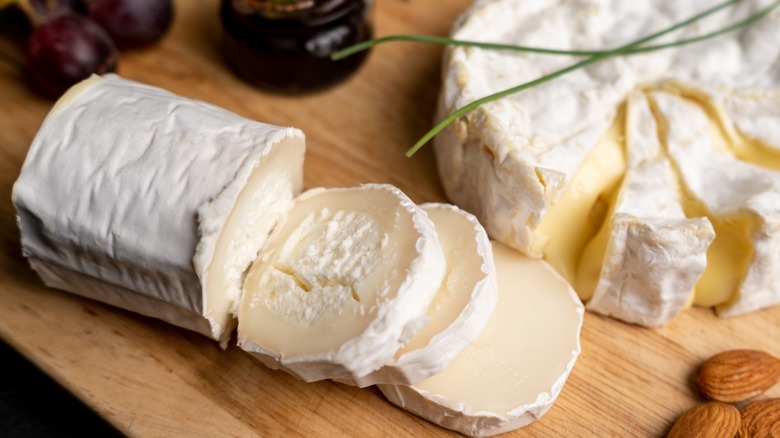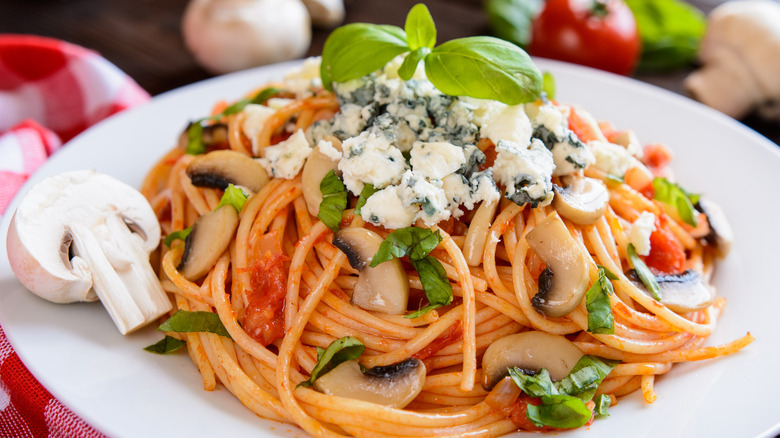Flash Freezing Soft Cheese Will Fix Your Crumbling Problem
When sitting down for a restaurant meal, fans of blue cheese may find it hard to resist menu items that come topped with those tangy crumbles. As Wisconsin Cheese points out, blue cheese crumbles pair well with a long list of dishes including pasta, burgers, baked potatoes, and steaks. But if you've ever tried to recreate one of those tasty and aesthetically-pleasing blue cheese-topped dishes at home, you may have discovered that actually getting the cheese to turn into those crumbles can be difficult to achieve.
That's because some soft cheeses may smear instead of crumbling. (And let's face it: Cheese-smeared pasta noodles just don't have the same picture-perfect appeal as ones topped with lovely crumbles!) As Lifehacker explains, blue cheeses like Roquefort, gorgonzola, and — one straight off our list of underrated cheeses — cambozola, can all be a challenge to crumble. Luckily, when it comes to making the perfect crumbles, your freezer may just help you prevent a total smear campaign.
Freezing soft cheese can make for better crumbling
Chèvre, or goat cheese, is another dairy product that can be on the softer side, and some varieties are more creamy than crumbly, according to Castello Cheese. But that doesn't mean chèvre crumbles are impossible to achieve. Woolwich Dairy highlights the use of chèvre crumbles on everything from crostinis to salads. So, whether you are aiming for perfect crumbles of blue cheese, chèvre, or another soft cheese, making quick use of your freezer might just be the answer.
According to a tip Seana Monahan shared with Cook's Illustrated, putting a log of goat cheese in the freezer for a few minutes makes it easier to crumble (via Lifehacker). However, the time the cheese spends in the freezer should be limited to three minutes, and the cheese should be broken up with a fork and allowed to warm up a little before being consumed. On the other hand, to keep things tidy, Cuisine At Home recommends breaking off larger pieces of feta or blue cheese, placing the pieces inside a plastic bag, and then breaking up the pieces inside the bag. This way, there's not even a smudged fork to contend with later. Of course, if your hands are too warm, this approach might send you back to a messy square one!

